The Angels in Medieval Eyes
I see no reason why beholding the Face of God would make the angels insensitive to lesser manifestations of goodness, truth, and beauty. On the contrary, if our artwork reflects in some small way the eloquence and skill of the divine Artist, they will savor this pale reflection more truly and more joyfully than we ever could; let us not forget that Dante spoke of angelici ludi—the playful celebrations of the angels.
And since they exist outside of time, their schedules are never full; their duties in the heavenly choir, for example, do not prevent them from joining us in church. If they have time to protect us, as the guardian angels clearly do, surely they have time to pray and sing with us as well (though I fear that they want nothing to do with many of our so-called hymns these days).
Again, I say this with all gravity. I hope it does not come across as fantastical or melodramatic. Medieval culture teaches us that the angels are pure and glorious and wondrously holy, and that they are a very real part of our world, of our society, of our daily life.
We cannot see them; nor can we see the air, and yet we breathe it. We cannot hear them; nor can we distinguish one violin in an orchestra, and yet it plays. We cannot touch them; nor can we touch love, and yet people feel it, and sometimes die for it.
These are the words of Robert Keim at his Substack Via Mediaevalis. He’s always like this: so fresh, lucid, calm, deep, like a perfectly still lake reflecting the glory of the mountains and the sky. I can’t recommend his Substack too highly.
This is why he and I have partnered to bring you a Christmas Special Offer that ends today (December 20th):
Those who take out a regular subscription to Tradition & Sanity will receive a free one-year (paid) subscription to Via Mediaevalis.
As of today, Mr. Keim has launched his first paid-subscriber-only post. Be among those who can enjoy it — and gain access at the same time to the archive of over 300 past articles at Tradition & Sanity, most of them with voiceovers you can listen to as you commute back and forth to work, do dishes or chores, jog or bike, or whatever you like to do with a podcast!
If you’ve already subscribed, consider giving Tradition & Sanity as a gift to someone else:
Now to our Weekly Roundup. And we’ll start where it’s best to start…
Good News
From the Far East
We tend to think about Catholic vestment design as something peculiarly Western. However, as John Paul Sonnen shows, we can find extraordinary work being done in Malaysia, by Jiang Huai Design. You can find lots of pictures over at Liturgical Arts Journal.
Christianity in China
Related: how often have we heard scholars, whether from the modern West or the Far East, describe Christianity as a religion “foreign to Asia”? But is this really true? Aurelio Porfiri sets the record straight:
Technically, it is true that Christianity did not originate in China, but the same could be said for Italy or France. Yet, in these countries, no one would consider defining Christianity as a foreign religion. However, in countries like China, where the sense of identity is exceptionally strong, there has always been—and still is—a tendency to view Christianity as an “imported faith.”
Reflecting on this topic, and many others, would likely surprise readers of the monumental first volume of Nicolas Standaert’s Handbook of Christianity in China, published by Brill. This work covers the origins of Christianity in China up to 1800. Readers are astonished by the wealth of information in the text, but one date, in particular, is worth highlighting: 635. According to the Xi’an Stele, which dates back to 781, a monk from the Syriac Church of the East—also known (misleadingly) by some as the “Nestorian Church”—arrived in China in that year, bringing Christianity with him. 635! This was shortly after the pontificate of Gregory the Great in the Catholic Church. Thus, in one way or another, Christianity has been present in China for almost 1,400 years, making it rather complex to continue labeling it a “foreign religion.”
Mass of the Ages
Millions of viewers have enjoyed and profited from the great Mass of the Ages trilogy (and if you haven’t watched these superbly made films yet, what are you waiting for? Organize a watch party for friends and family!). Now that the trilogy is done, you might be wondering — what’s next? Here’s a taste:
How chant survived the post-Council
Joseph Pearce pays tribute to Dr Mary Berry, one of the key figures in the transmission of Gregorian chant from the preconciliar days to the present traditionalist revival. I put this under good news because it is a cause of wonder and gratitude to see how Divine Providence raised up heroic individuals to carry on the tradition in spite of churchmen’s abuse of their freewill, drunk on the “spirit of the Council.”
Strickland Goes to Bat for Lefebvre
In a development I wasn’t expecting, Bishop Strickland has released a potent letter indicating that he is moving rapidly along in his journey to a full-blooded traditional Catholicism. I mean, he ends by favorably quoting Lefebvre’s famous November 1974 statement! Of course, he has always been a man full of faith, zeal, and love for souls, and this will always lead to the sources and resources of tradition.
Next Conclave will veer away from Bergoglio
Andrea Gagliarducci is generally a good commentator on Church affairs, and he sees this pontificate as a royal dumpster-fire (if I can mix images there), one that the College of Cardinals will want to move away from. Along the way, he praises the truly remarkable initiative I mentioned last week: The College of Cardinals Report, with Diane Montagna as its executive director. This database of detailed and revealing information about all the cardinals is likely to be a game-changer. You can bet that not a few of Their Eminences are studying it, using a VPN to avoid being tracked.
The glory of Catholicism
Here is a photo of a Solemn High Nuptial Mass at the Shrine of St. Joseph in Detroit, run by the Institute of Christ the King Sovereign Priest.
It’s the most epic photo shoot ever (thanks to Allison Girone and her team). If you use Facebook, you can view a gallery here.
Disordered Concupichscence
LifeSiteNews interviewed me about the letter Cardinal Cupich released, in which he all but condemned kneeling for Holy Communion, cast aspersions on the faithful who choose to do it, and repeated stale bromides about the Glorious Revolution of the 1960s. Some of my reactions:
Kwasniewski noted that Cupich “doesn’t even get the Latin saying correct. It’s not ‘lex orandi, lex credenda,’ but ‘lex orandi, lex credendi,’” and that the prelate “cattily avoids saying that the Vatican has repeatedly affirmed the right of the laity to receive Communion kneeling if they wish.”...
“More to the point, it’s far more communal to have the faithful kneeling across an altar rail, shoulder to shoulder, as the priest moves from one to the next. How is it more communal to queue up in a line, one by one, as if buying bus tickets?” he argued.
In a final note, Kwasniewski critiqued “the notion that the Church has been so enriched by Vatican II and its liturgical reforms” expressed by Cupich. This idea, he said, “is belied by the constant decline in church attendance from the mid-1960s onward (that is, from the time when the tinkeritis began in earnest). The most basic form of active participation is to show up for Mass. On that simple criteron, the reform has been a colossal flop.”
(I find it interesting that, in spite of a firestorm of criticism that has been heaped on Cupich’s letter, over a week after publication the typo “credenda” has still not been corrected. Is this a sign of stupidity or a middle finger?)
Now, looking at the photos, which one seems more “communal” to you:
(Yes, I know the East does things differently — the faithful don’t kneel. That’s not my concern here. In the West, however, we've been kneeling for communion for centuries and centuries, so the sudden discontinuation of it, and the discouragement of it, is part of the reason for our crisis in Eucharistic faith. Besides, in the East, you have only clergy giving Communion, on a golden spoon, from a golden chalice, into the mouths of stooping laity, while two servers clad in regal garments suspend a red cloth. That doesn’t sound anything like Novus Ordo praxis. We have far more in common than what divides us.)
Many good people wrote resounding critiques of Cupich’s letter, not only because he is wrong, but because he is smug, deceptive, and authoritarian in his wrongness. The best rejoinders were:
That of Amy Welborn: “Up… off your knees!”
That of Larry Chapp: “Kneeling and the selective ‘listening’ of synodality” (here, I can’t resist quoting some of the juiciest bits):
This letter from the Cardinal shows us is that for all the talk about a more “inclusive” and “listening” and “synodal” Church, and for all the agitprop pontifications from folks like Cupich about how in a synodal Church the “people of God” are “finally” getting their say, all the rhetoric surrounding the Synod about listening to all voices is an empty sham.... The blunt word “sham” is the only word I can find that accurately conveys the reality... And it is indeed a sham and the recent letter from Cardinal Cupich makes this clear, since all the chatter about a more inclusive synodal Church, when it comes to the liturgy, seems to be code for allowing liturgical innovators in a leftish register to do their thing, while severely circumscribing and hemming-in those whose “lived experience” is grounded in more traditional liturgical expressions....
This letter from Cardinal Cupich has to be read as a not-so-subtle devaluation of the Church’s traditional liturgical piety in favor of a valorization and freeze-framing of Baby Boomer “Muskrat Love” spiritualities of saccharine superficialities. This is a nostalgic romanticizing of the era of lava lamps and eight-track tape players translated into liturgical form. It is the liturgical embodiment of corded avocado-colored phones that smell of cigarettes.
Arrow, meet target.
And, lastly, that of Eccles is Saved: “No kneeling in Church!”
Sometimes, in the Church today, you just have to laugh at the idiocy going on. That’s actually what it deserves, and the Lord himself sets the example: “He that dwelleth in heaven shall laugh at them: and the Lord shall deride them” (Ps 2:4). With that in mind… here’s Matthew Hazell’s announcement of Card. Cupich’s latest book!
I don’t know how many of you take time to read the comments that readers of Tradition & Sanity leave at the bottom of posts, but there’s some solid gold in these comments (and I thank all of you who take the time to leave them!). Here’s one that I particularly wanted to share, because it shows how absolutely out-of-touch, one might say, disconnected from reality, someone like Cardinal Cupich is. Brennan articulates something that countless Catholics have felt over the decades:
Liturgical Lessons
(I’ve decided to give permanent names to some of the recurring categories in the Weekly Roundup. Since we’re watching this area with particular closeness, and since there’s a lot of excellent work being done in it, I’ve decided to call it “Liturgical Lessons.”)
DiPippo Critiques Pitre
As readers know, both of my articles this week (Monday’s and Thursday’s) were about why we read the Epistle to the east and the Gospel to the north at the Traditional Latin Mass, in response to Dr. Brant Pitre’s lecture on active participation in which at one point he critiques this practice as an historical accident and mistake. Now I have been joined by the formidable Gregory DiPippo, editor of New Liturgical Movement, who more systematically points out the significant errors present in Dr. Pitre’s presentation. (This is part 1; I’ll share part 2 next week.)
Ember Days
Today is Ember Friday of Advent. Holy Mother Church knew what she was doing with these quarterly Ember Days. They seem to come at just the right moment, four times a year. Their abandonment after the Council shows the unwisdom of the entire move away from tradition.
Cardinal Ranjith
All over the news people are talking about Cardinal Ranjith forbidding altar girls in his diocese, saying that allowing them will affect vocations to the priesthood and the diocese can’t afford to take that hit. Well, no duh, of course that’s what the good bishop should be doing. The entire decades-long trend of putting girls and women into ministerial positions is completely and utterly untraditional and uncatholic; it's pure nonsense, symbolically, and is just as bad for women as for men. I have presented all the arguments for the traditional view and against the modern view in my book Ministers of Christ: Recovering the Roles of Clergy and Laity in an Age of Confusion (Crisis Publications, 2021).
By the way, Sophia’s having a seasonal sale, asking $10 for this book (list price $19.95).
Paul VI as liturgical rationalist
Dr. Joseph Shaw cleverly parallels a passage from Trollope parodying the rationalism of a 19th-century Church of England evangelical with the actual sayings of Paul VI, who, as it were, out-evangelicals the evangelical. It’s both an insightful piece and a rather disturbing one; yet I think we must come to grips with the fact that the universal mess in which the Catholic Church finds itself owes more to Montini than to any other human being.
Erasing the traces of Catholicism in everyday language
By far one of the most interesting articles I’ve read in a long time is Dr. Jennifer Bryson’s “’55 and ’69 Liturgical Reforms Uprooting Oral Custom” over at OnePeterFive. Jennifer describes how folk culture was saturated with sayings based on saints' feasts and liturgical seasons (her list of such sayings is in itself delightful — as an American, I can hardly imagine having so many and such colorful saint-related idioms!).
Successive waves of reform broke apart these deep connections, thus (inadvertently? certainly ironically) thwarting that very evangelization of culture which was said to be the goal of the modern Church. She writes:
Historically, leaders hostile to the Church understood that breaking the bond between faith and culture was an essential step toward eliminating faith in the population. In particular, they knew that the long-standing traditions found in language and special celebrations were key reinforcements of the faith-culture bond.
Two examples of leaders who sought to break this bond are King Henry VIII and Adolf Hitler. King Henry VIII issued an edict to ban the use of agricultural and meteorological sayings connected to saints’ feast days. [...] The Nazi regime in Germany made a point of trying to use and shape folklore sayings to foster their ideology because they recognized the influence of folklore in the culture. Moreover, under their anti-Catholic measures, “the state abolished some religious feast days and moved others from weekdays to Sundays.
Bryson documents how the Nazis tried to abolish the feast of the Ascension as a holiday (always on a Thursday, of course — no one ever dreamed of doing it except 40 days after Easter), and tried to force people to work. But in some parts of Germany, the people refused.
Now, most bishops move Ascension to the nearest Sunday. If you can't beat the devil, might as well join him, seems to be the motto.
In short: the creation of a new liturgical calendar in 1969, and the line taken by episcopal conferences, ended up having some of the same culture-canceling effects as the anti-Catholic policies of Henry VIII and Adolf Hitler. The things you never learned in school!
Theological Treasury
A brilliant piece by Michael Foley of Baylor University, on the Filioque.
If you’ve ever wondered about the rather bizarre passage in the OT where Saul has a witch summon the spirit of Samuel, Robert Lazu Kmita has given us the definitive commentary on it.
Reflecting on a high-profile debate he had with an Eastern Orthodox over the papacy in the early Church, Erick Ybarra has written a really excellent piece about religious epistemology, an area where he especially shines. He asks: How do we know that one form of Christianity or another is the true one? Why would a Catholic — even one fully aware of the corruption present in Church history, the “gray areas” in theology, and the present-day Babylonian captivity of Rome — not be tempted to join the Protestants or the Orthodox? For what it’s worth, I could have written nearly every sentence of this piece, that’s how closely Erick and I think alike on this matter.
In “Theodicy and Belief in the Age Disenchantment,” Kurt Hofer shares his experience of being sick and finding healing:
Many or even most of us moderns are in despair. The worst part of all is that we don’t know it. Like second-rate doctors, we treat the symptoms, not the disease. Disenchantment cannot be cured by more of the same medicine. I died and was buried in an MRI machine and an operating room at UCLA medical center; and yet I live, no longer I, but Christ lives in me.
Miscellany
St. Lucy Mascot?
Last week at New Liturgical Movement, I shared the work of a college art student, Isabelle Velasco, who imagines what it might be like to have St. Lucy as a pilgrim mascot instead of the Vatican's Luce. Within a day, 17,000 people had viewed the picture and description at NLM:
Age-differences in the perception of technology
Prof. Nicholas Smyth of Fordham University shares that a large proportion of his students “are often far more jaded and angry about digital technology than [he is].”
The whole article (at the remarkable Substack After Babel) is well worth reading, but it struck me that there a such a big difference between those of us who had normal “unplugged” childhoods and adolescences, who grew up to adulthood even before email was a big deal, let alone social media, have a quite different attitude toward these things. We can see the evils they bring, but we have a sort of built-in sense of the world apart from the technology; our lives were not lived with and through and in these things. Our most fundamental habituation occurred outside of them. I believe this gives us older folks (I’m in my 50s) an almost “unfair” advantage, in that no matter how much we use the technology, it still feels more like a tool than a form of consciousness.
I wonder how the ensuing generational differences and dynamics will affect the passing-on of traditional Catholicism, and how many youths will be able to pull far enough away from pervasive and invasive technology to give their own children an unplugged childhood. I recently read someone saying: “When you want your kids’ childhood to end, give them a smartphone.” This is profoundly true, yet most people (?) still haven’t seen how true it is. Not even homeschoolers all seem to be on board with the low-tech John Senior approach. But that is sanity, and I wouldn’t be true to the name of this Substack if I didn’t say so.
Preparing for Christmas… in his own way
I’m not going to claim that my cat Weezer is pious. However, he does rather like to rest next to the statue of Our Lady and the Baby Jesus on my upstairs desk, and he particularly likes to lie down on theological papers.
The paradoxes by which we live
A God and yet a man? A maid and yet a mother? Wit wonders that wit can Conceive this or the other. A God, and can he die? A dead man, can he live? What wit can well reply? What reason reason give? God, truth itself, does teach it; Man’s wit sinks too far under By reason’s power to reach it. Believe and leave to wonder.
(Anonymous 15th-century poet)
Taken from Regis Martin’s article “The House Where It All Began.”
May the Lord graciously bless these last days of Advent and your celebration of the Christmas mysteries.
God bless you and yours, and thank you again for reading Tradition & Sanity.






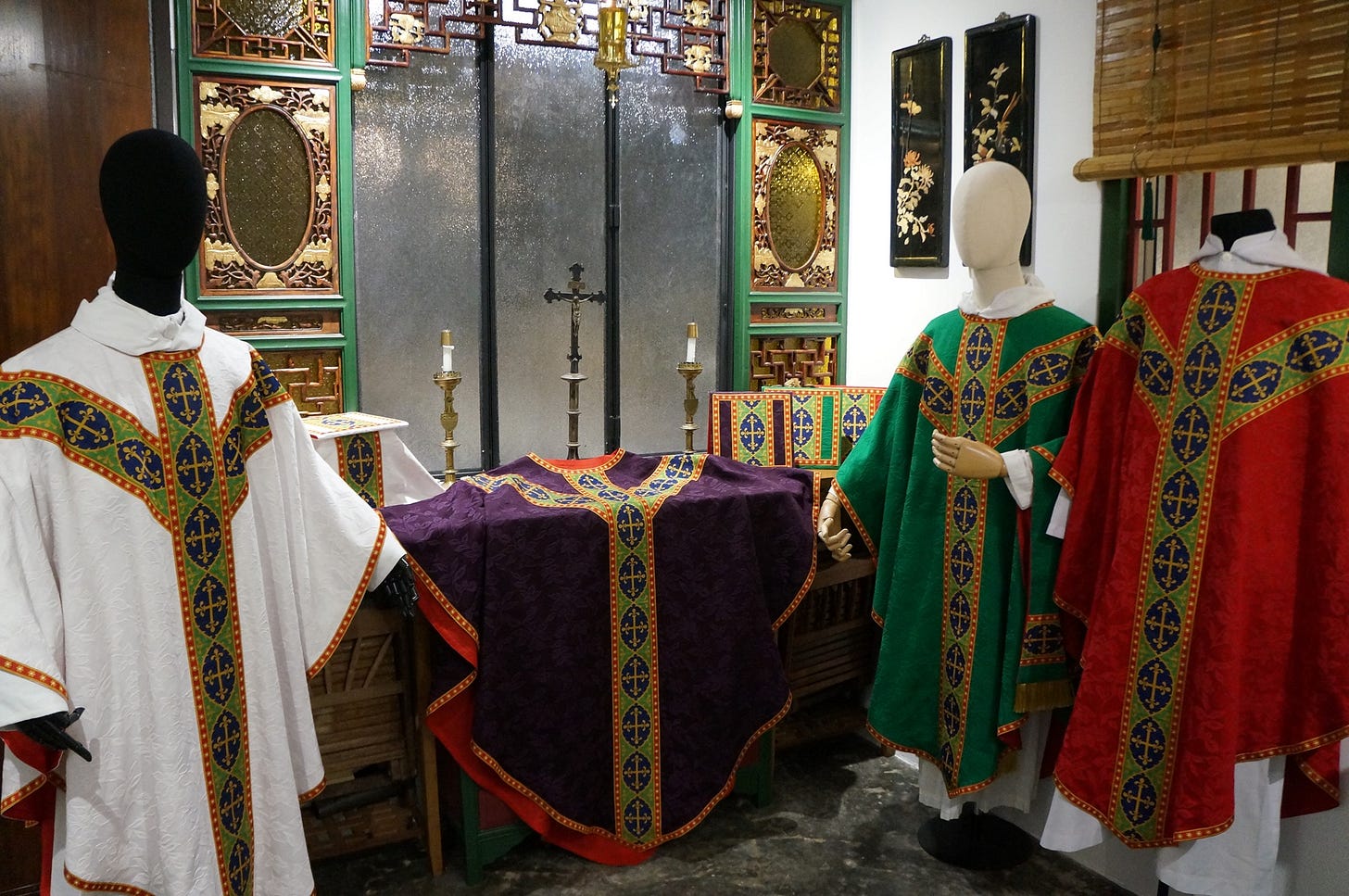
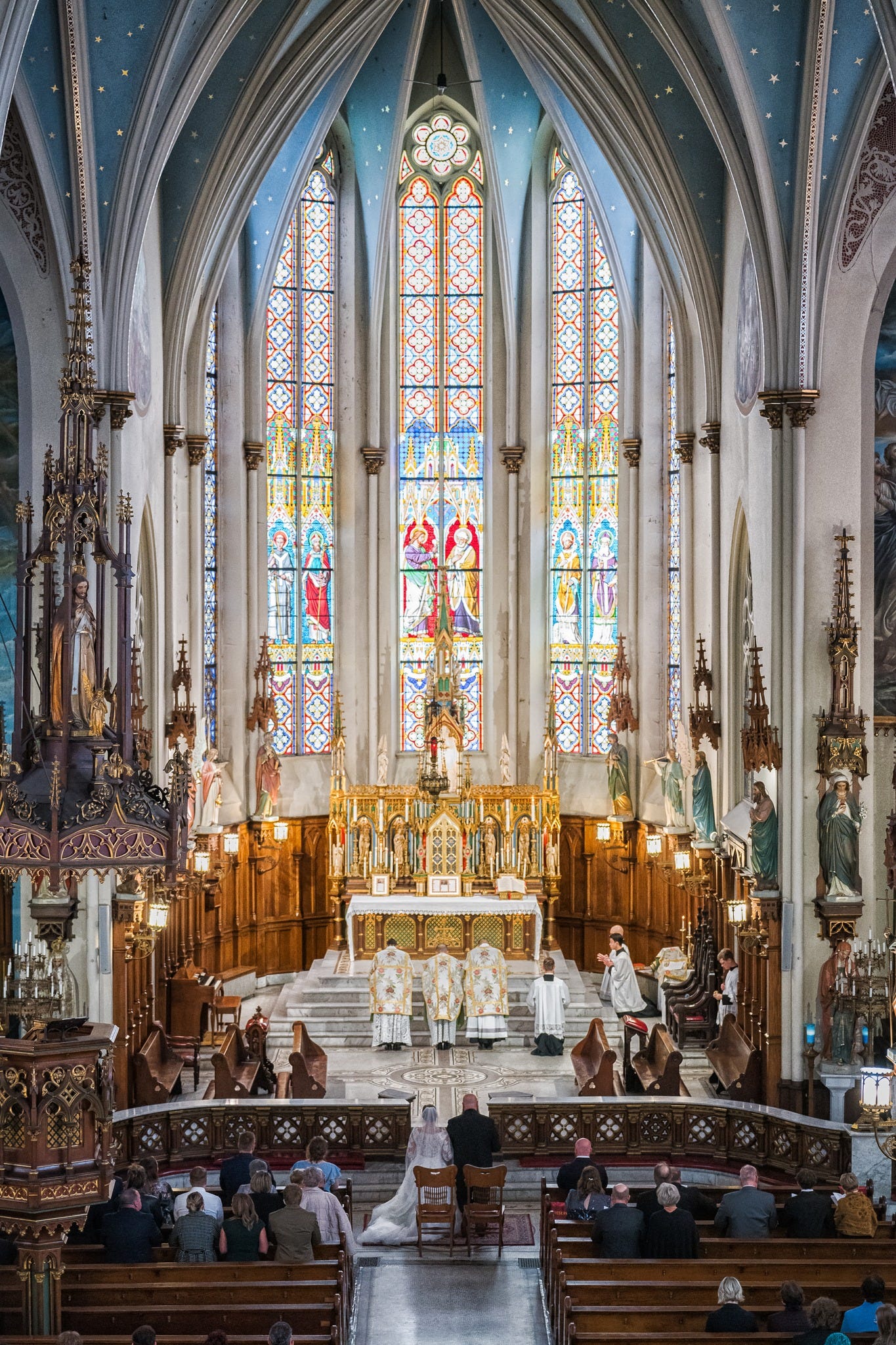
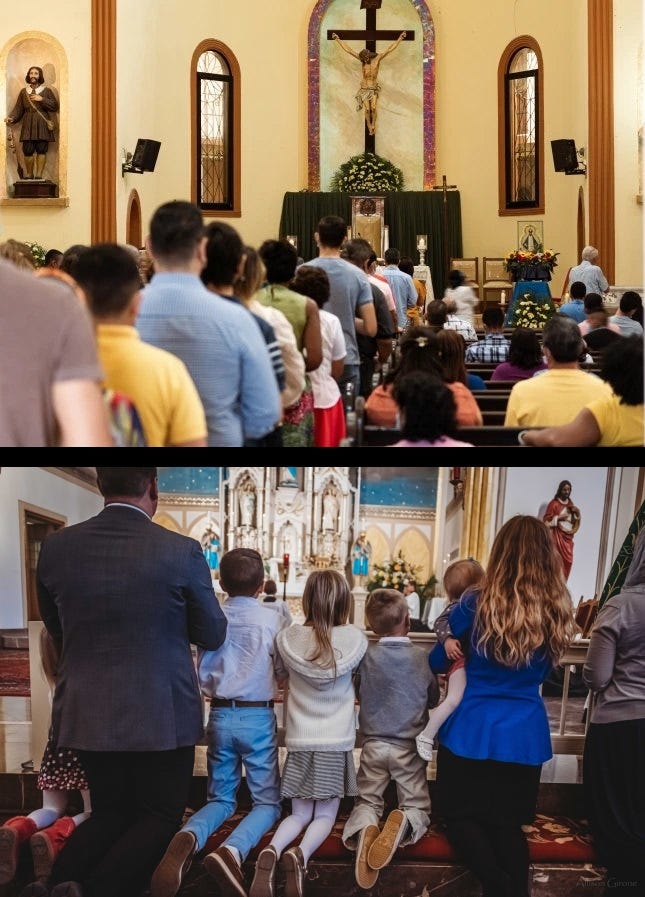
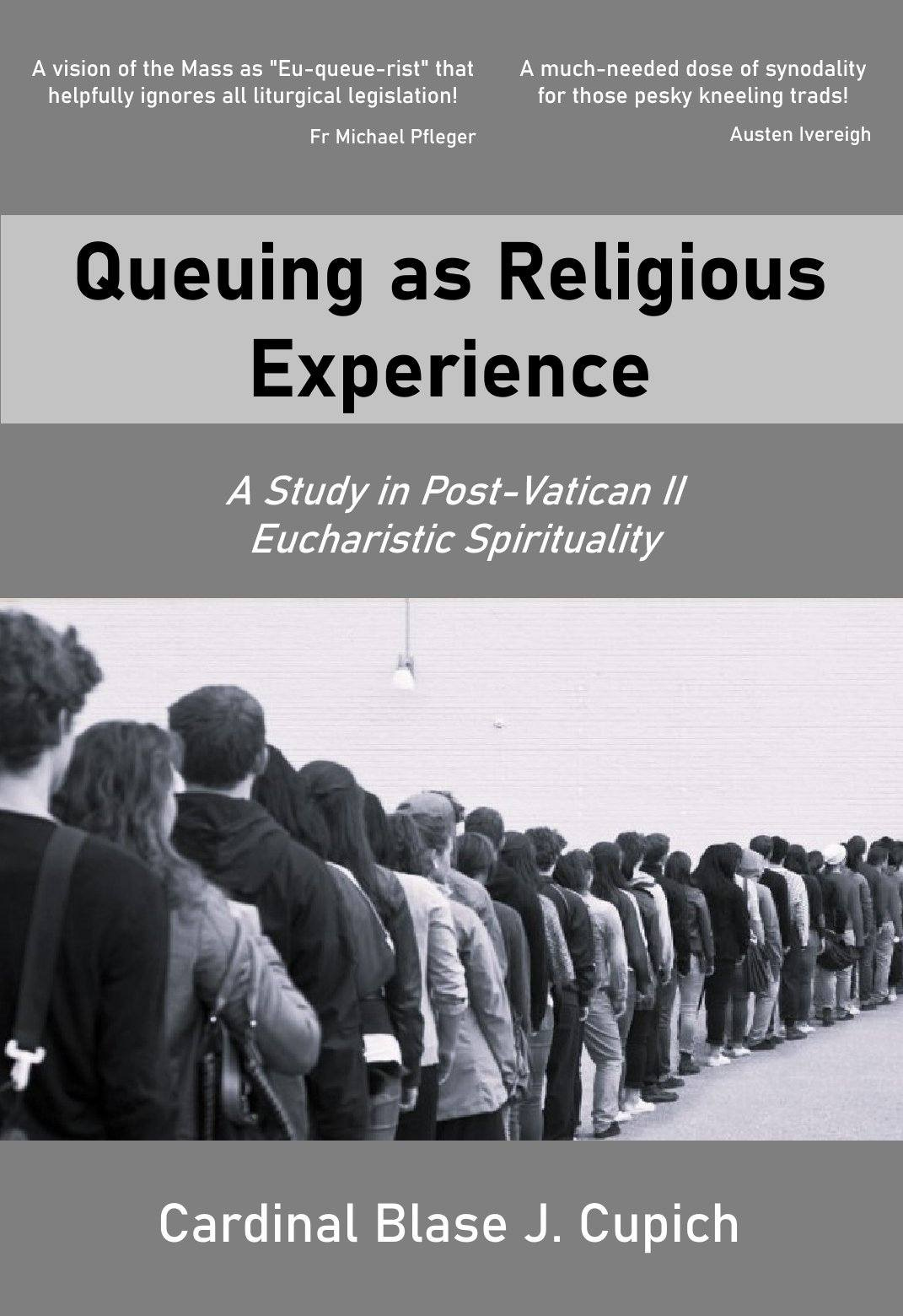
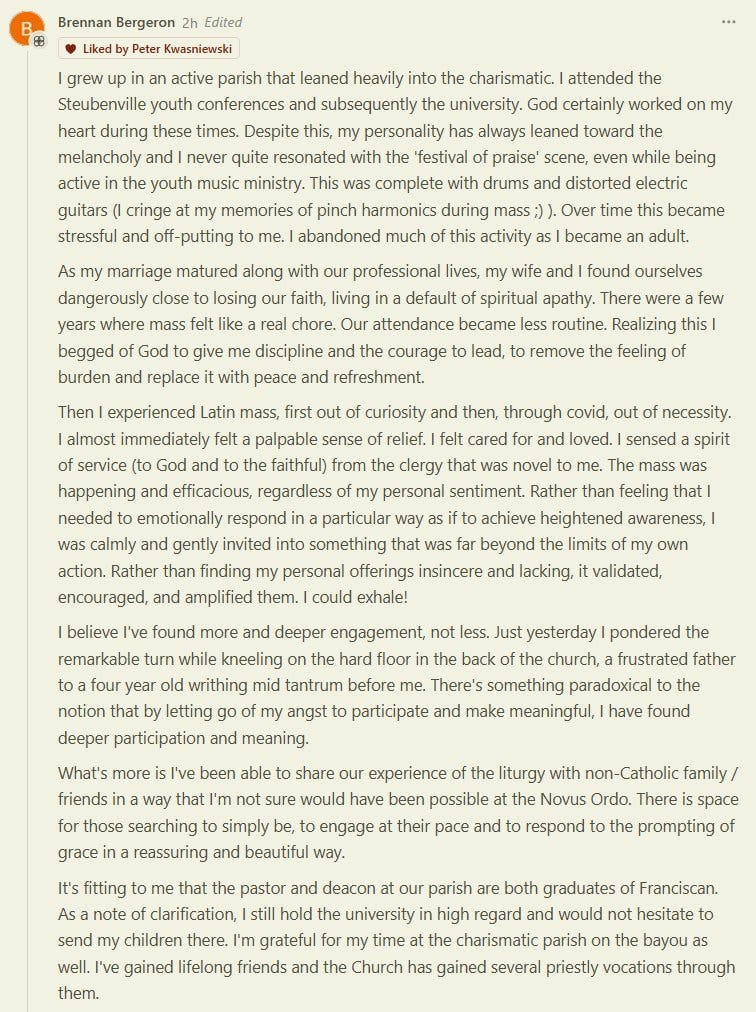

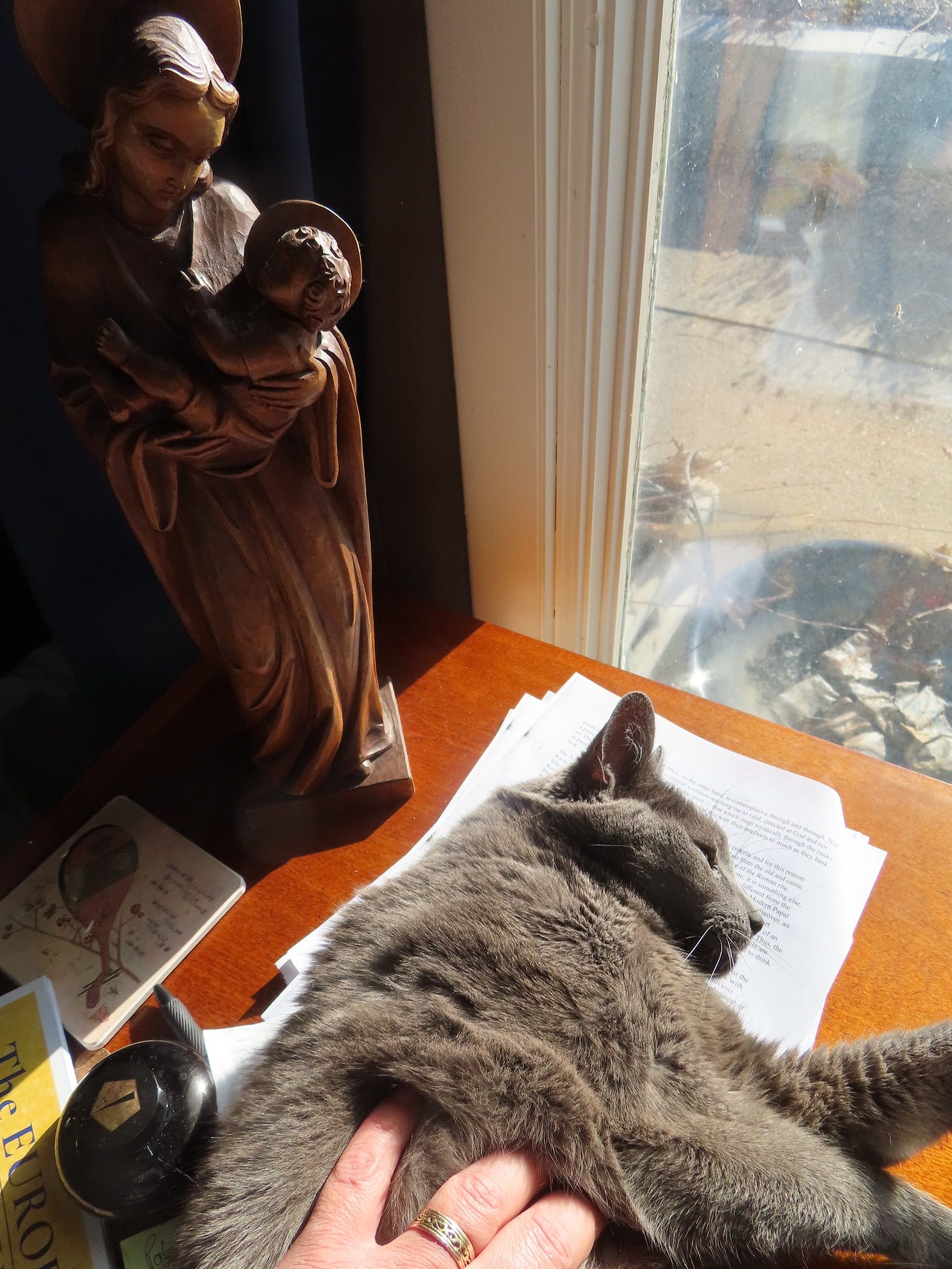
Dr. K, I agree that the +Strickland letter was huge. I almost couldn't believe it was real at first. We need to let sink in the significance of a fellow U.S. bishop coming out so publicly in support of +Lefebvre and the SSPX, critiquing the liturgical rupture and anthropocentricity of the Novus Ordo, and pointing to (gasp!) Vatican II as the source of our present crisis. (And unlike +Vigano, who hasn’t been seen in the flesh for years, +Strickland is not “in hiding” – either physically or virtually behind a seemingly unbalanced ghostwriter.)
In my opinion, traditionalists would do well to make a similar pivot in 2025. Instead of focusing so much on Pope Francis (and, especially, trying to “out-trad” each other by declaring him an anti-pope, as if that does anything to solve the crisis), we need to focus more on exposing how we got to our present situation.
For me, it really clicked when I realized that Pope Francis and his “synodal church” is merely the fruit of Vatican II's ecumenical ecclesiology. In this regard, the final document on the synod gave us a real gift by making this connection explicit: “The Second Vatican Council was indeed like a seed thrown onto the field of the world and the Church… The Synod 2021-2024 continues to draw upon the energy of that seed and develop its potential, putting into practice what the Council taught about the Church as Mystery and Church as People of God” (para 5).
Indeed, things are so much clearer now, and even bishops are starting to wake up to possibilities they’d never dared consider in the past. I believe getting us to this point is one of the reasons why God, in His providence, has permitted Pope Francis. Can anyone imagine a letter similar to +Strickland's coming out under John Paul II or even Benedict XVI?
Peter,
When will you set that beautiful poem to your own special music? r